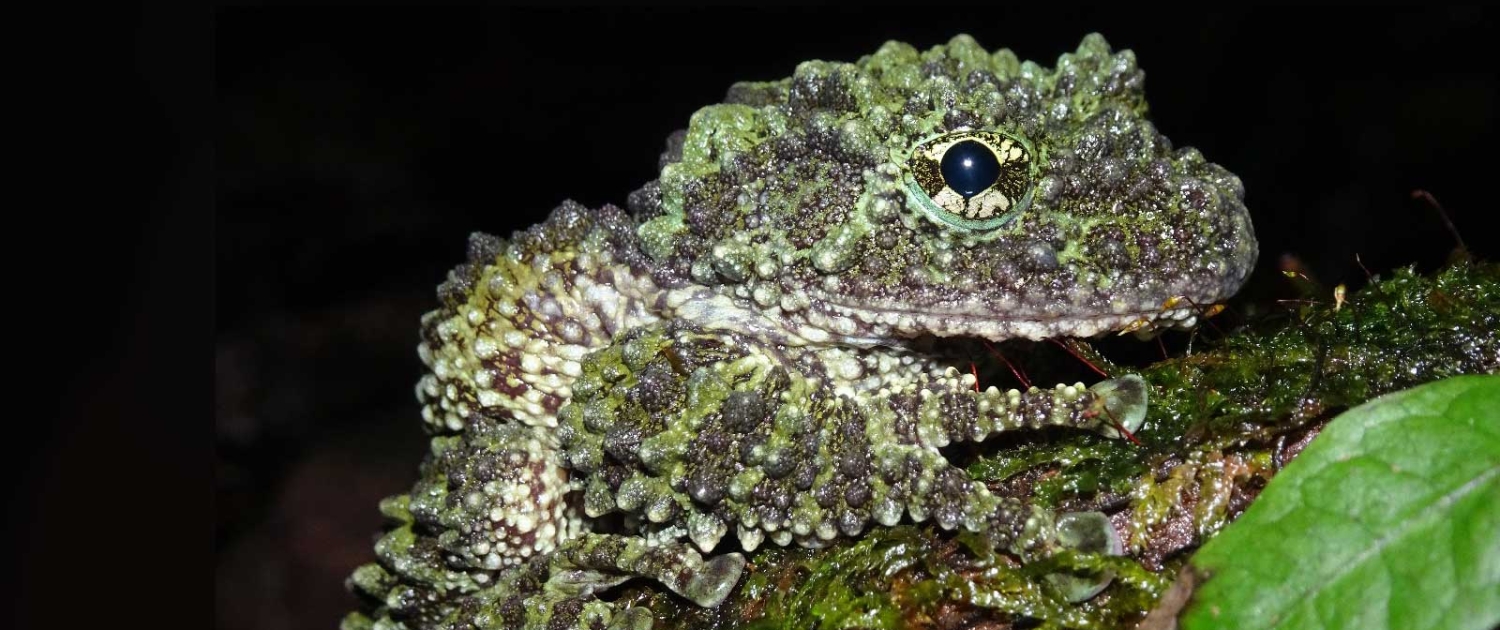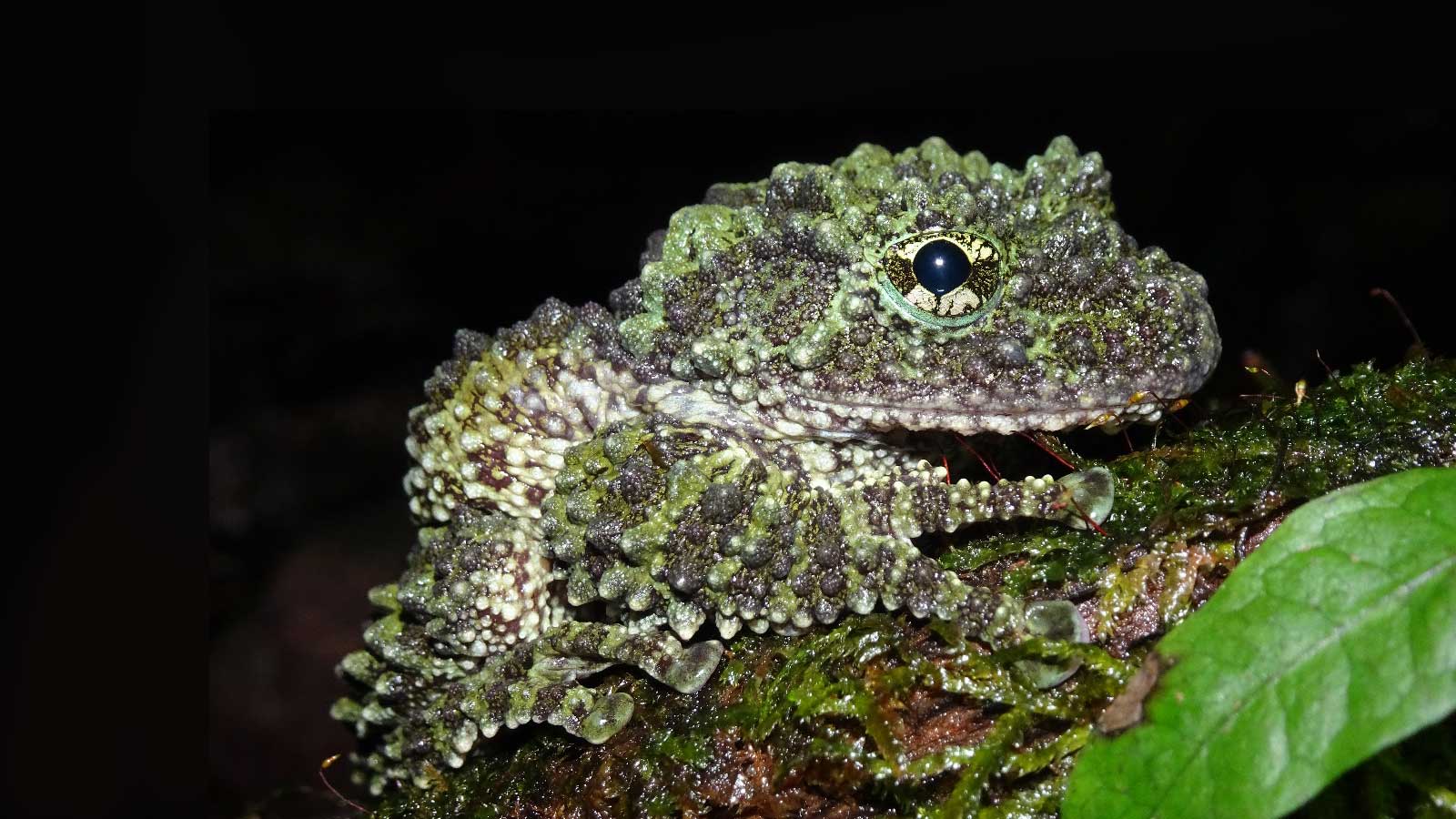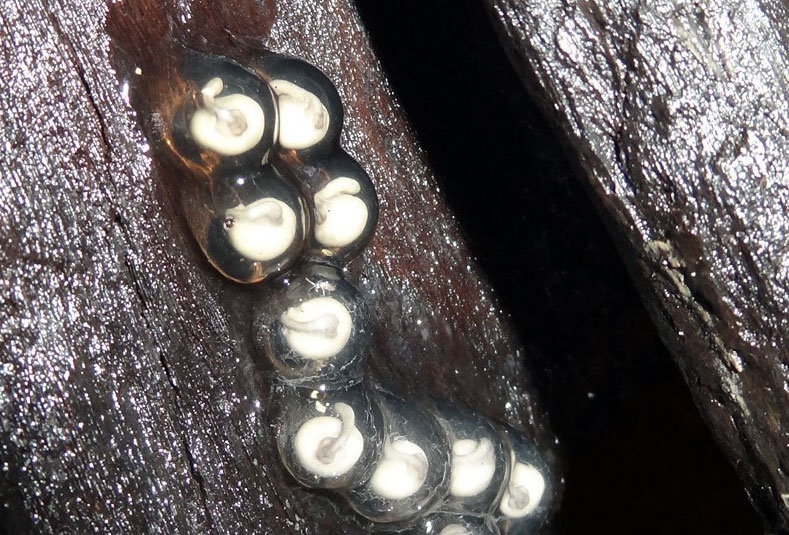Mossy frogs
(Theloderma spp.)
Saving the Mossy frogs
Moss frogs are masters of camouflage. They have a high rate of new discoveries. More research is needed to better protect them.
Secrets of life stile
Little is known about their natural history. Breeding, as far as is known, takes place in a small water pool in a cavity of a tree, bamboo or karst. The female places up to 20 eggs just above the water. After about one to two weeks, they hatch into tadpoles that drop into the water.
Artful camouflage
Mossy frog species are very divers in resebling natur surrounding. Some resemble plant material like bark or moss, some bird droppings or rocks. 24 Mossy frog species have a decreasing population status. 5 of them – all occurring in Vietnam – are listed as threatened on the IUCN Red List: 3 as Endangered and 2 as Vulnerable.
More data is needed!
Some Mossy frog species are known from only a few individuals and a single site. It is unclear whether this is due to true rarity or cryptic behaviour and further research is needed to determine the species’ tru abundance. Protection of habitat at If the species is found not to occur in any nearby protected area, protection of habitat in the known location of the species could be warranted.
The extensive factsheet for this species can be downloaded below.











